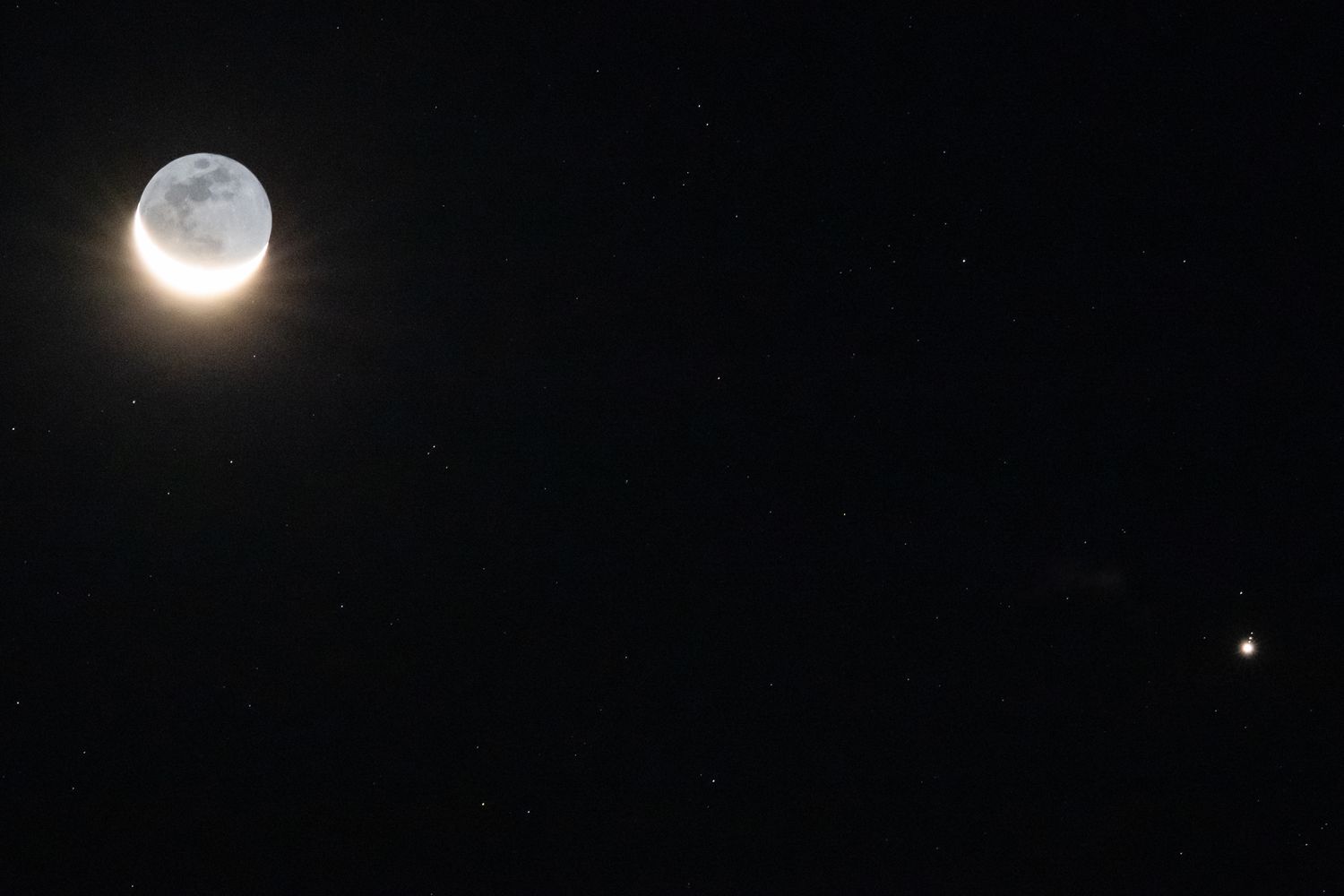NEED TO KNOW
- On Monday, Oct. 13, into early Tuesday, Oct. 14, the moon and Jupiter will appear side by side just before midnight
- The two will sit about 6 degrees apart, with Jupiter shining brightly to the moon’s right
- With clear skies, this stellar sight will be visible to the naked eye, as long as you look toward the eastern horizon
If you’re in the mood for a little late-night magic, you’re in luck!
Just after midnight, the moon — now passing its last quarter phase — will light up the east-northeastern horizon, cozying up right next to Jupiter, the largest planet in our solar system. The moon and Jupiter will also rise alongside Pollux, a star in the constellation of Gemini, forming a rare “fall triangle.”
Jupiter and the moon will rise side by side in the same patch of sky, separated by only about six degrees, while transiting the astrological sign of Cancer.
However, their apparent closeness is actually an illusion of perspective, as the moon sits about 235,000 miles from Earth, while Jupiter is a jaw-dropping 477 million miles away, per Space.com.
Together, they’ll create one of October’s most beautiful sky pairings, and if you’re familiar with astrology, it’s important to note that Jupiter is considered a beneficial planet.
The moon also rules the sign of Cancer, making this celestial event especially mystical and comforting.
So, whether you’re an astrology enthusiast or an avid skywatcher, this cosmic event is all the more reason to plan for another stellar sight.
Here’s everything you need to know about this planetary alignment, and when to watch.
When will the moon and Jupiter be visible?
If you’re up late on Monday, Oct. 13, or awake early on Tuesday, Oct. 14, you’ll catch a glimpse of this cosmic duo in action.
The moon will rise first, followed closely by Jupiter, glowing brightly just above the east-northeastern horizon. Both planets will be visible for most of the night, appearing higher in the sky as the hours pass.
Where will Jupiter and the moon be visible?
If the weather permits, you won’t be able to miss it!
Whether it be an open field, a beach or a rooftop without too many trees, your best bet is to look toward the eastern horizon.
This cosmic meetup will be visible across much of the world, but skywatchers in North America will have a particularly striking view if the weather cooperates. The later it gets, the higher both planets will appear, until they eventually make their descent toward dawn.
How to watch Jupiter rise alongside the moon?
The best part about this celestial event? You don’t need fancy equipment!
All you need to do is go outside and look toward the east-northeast. Jupiter will be the brightest object near the moon, outshining every star around it.
However, for those with binoculars or a telescope, you’ll be treated to an even more mesmerizing view of Luna and the gas giant.
How to capture this stellar moment?
If you’re hoping to capture the magic, set up your tripod and use a long exposure (1 to 3 seconds) to bring out both the brightness of the moon and the subtle glow of Jupiter.
Smartphone users can also switch to night mode, tap to focus on the moon and slightly lower the exposure to avoid gl
Read the full article here

















